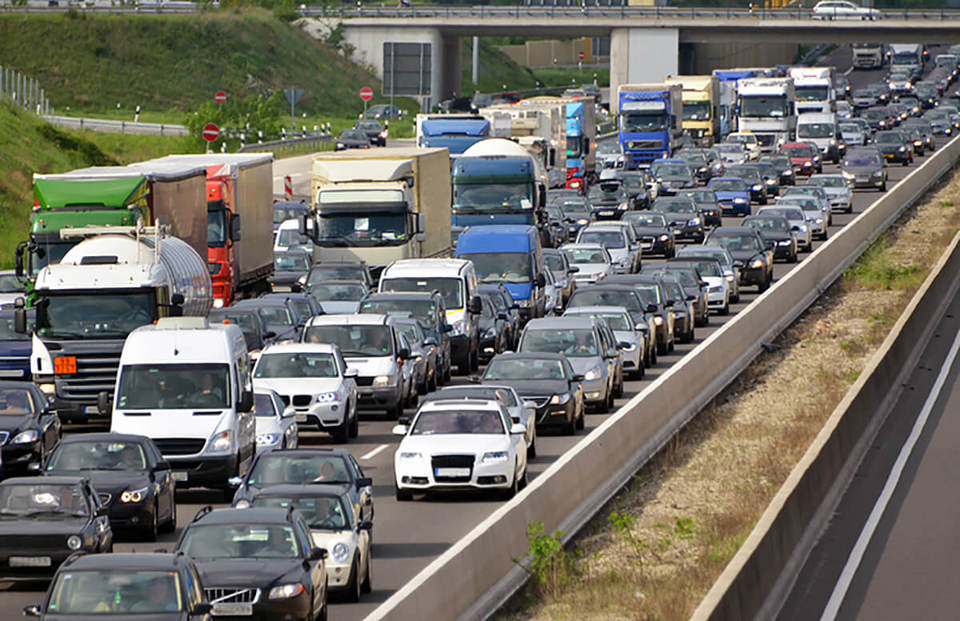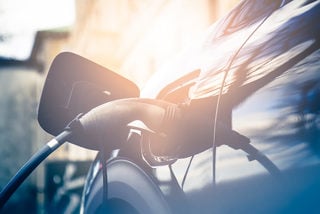Government targets for ultra-low emission vehicles (ULEVs) have been branded unrealistic and unachievable, although the fleet sector is committed to accelerating uptake where possible.
The Department for Transport (DfT) wants at least half of all new cars sold and 40% of the new van market to have to emissions of less than
50g/km of CO2 by 2030.
Ensuring at least 50% of new cars sold meet the emissions threshold would require almost a 23-fold increase in uptake from the current market share of 2.2%.
The required increase in adoption rates for vans would be even higher, with just 0.3% of new van sales currently classed as ultra-low emissions.
The interim targets form part of the DfT’s new Road to Zero strategy – a plan to phase out the sale of new conventional petrol and diesel vehicles by 2040.
By then, transport secretary Chris Grayling says he expects the “majority” of new cars and vans sold to be 100% zero emission and “all” to have “significant zero emission capability”.
The Government wants “almost” every car and van to be zero emission by 2050. Zero emission vehicles currently hold just 0.6% market share.
Progress towards the interim target of at least 50% of the new car market and up to 40% of the new van market being classed as ULEVs – sub-50g/km – will be reviewed in 2025. If not enough progress is being made, the Government says it will look at “interventions”.
It is hoping a combination of innovation, improved infrastructure and incentives – laid out in the strategy – will help deliver its targets.
The British Vehicle Rental and Leasing Association (BVRLA) has pledged that its members will increase their annual purchase of new plug-in vehicles from 17,000 today to 300,000 by 2025, going some way to fulfilling the Government’s Road to Zero targets.
Two-thirds – 200,000 – will be company cars; the balance will be rental, Motability and personal lease cars, plus vans.
“Our numbers are significant and our members are committed,” said BVRLA chief executive Gerry Keaney. “But the Government has an active role to play to facilitate an aggressive uptake.”
He wants to see three things: the 2% BIK for EVs brought forward from 2020 to 2019; a commitment to five-year BIK rates and EV
incentives; and investment in infrastructure.
“Road to Zero is a great first step, but it’s not sufficient. The Government needs to do more and we urge them to engage with us,” Keaney said.
Despite the BVRLA pledge, Ashley Barnett, head of consultancy at the UK’s largest vehicle leasing company, Lex Autolease, told Fleet News that the Government faces an uphill challenge to meet its targets.
“We’d need to see an additional 100,000 new AFV (alternative fuel vehicle) registrations each year between now and 2030 to reach the 50% target,” he said. “The transition to ultra-low and zero emission transport is technically possible, but in reality, there is currently limited product availability, confusion around the current tax regime, and not enough in-life benefits to make ULEVs an attractive option.”
‘FAR BEYOND’ EU TARGET
The Government revealed plans to ban the sale of new conventional petrol and diesel cars in its air quality plan last year.
The Society of Motor Manufacturers and Traders (SMMT) said the new interim targets, published almost a year later, go “far beyond” those proposed by the European Commission. The EU wants 30% of all new vehicles to be ULEVs by 2030.
SMMT chief executive Mike Hawes said: “These new technologies, and the lengthy investment required to deliver them, cannot be fast-tracked.
“We need realistic ambition levels and measures that support industry’s efforts, allow manufacturers time to invest, innovate and sell competitively, and provide the right incentives and infrastructure to take the consumer with us.”
The interim van target, according to the SMMT, will be particularly tough to meet, with just 0.3% of new van sales currently classed as ULEVs.
“Achieving 40% market share would require a nearly 144-fold increase in uptake from the current position,” said Nigel Base, commercial vehicle development manager at the SMMT.
“Vans are business tools and drivers are typically more sensitive to purchase price and return on investment than car buyers, while current electric van technology, which involves large batteries, can mean reduced carrying capacity.”
Countries where plug-in vehicle adoption has been high typically promote in-life benefits such as free parking and charging, use of bus lanes and cheaper annual road tax.
“All of which also contribute to a stronger secondhand market, which is essential for mainstream adoption,” said Barnett.
The Road to Zero strategy does commit to continue offering grants for plug-in cars, vans, taxis and motorcycles until at least 2020, and that they will be maintained at the current rates until at least October 2018. It also acknowledges that consumer incentives in some form will continue to play a role beyond 2020.
Barnett said: “While it’s positive, more clarity is needed to give drivers the confidence to opt-in.”
Nick Brownrigg, Alphabet chief executive, also called for more clarity.
“The residual value risk on 300,000 EVs is £4.5 billion and circa £20bn for the car park that the BVRLA is talking about (720,000 by 2025),” he said.
“To do this, we need more certainty and one area is BIK. It is not ideal for a customer to choose a vehicle for three years today and have no idea of their BIK in the final year.”
DRIVING UPTAKE
For its part, the Government has pledged to lead by example on EV uptake by ensuring 25% of the central Government car fleet is ultra-low emission by 2022 and that all new car purchases are ultra-low emission by default.
It has committed to 100% of the central Government car fleet being ultra-low emission by 2030.
The strategy also includes a number of initiatives to boost the charging infrastructure for electric vehicles (EVs). For example, the Government says it will look to mandate charge points in newly-built homes and for new lampposts to include charging points.
It will also launch a £400 million Charging Infrastructure Investment Fund to help accelerate the roll-out of charging infrastructure by providing funding to new and existing companies that produce and install charge points.
Furthermore, a £40m programme to develop and trial wireless and on-street charging will be launched, as well as providing up to £500 for EV owners to install a charge point in their home.
There is also a proposal for increasing the grant level of the Workplace Charging Scheme from £300 per socket to 75% of the purchase and installation costs of a charge point capped at a maximum of £500 per socket.
ROLE FOR DIESEL
Despite the plethora of plug-in incentives, the Government insists it is taking a technology-neutral approach and there is a role for diesel, in the short term at least.
“Cleaner diesel vehicles can play an important part in reducing CO2 emissions from road transport during the transition to zero emission vehicles, while meeting ever-more stringent air quality standards,” said Grayling.
However, he stressed that for diesel vehicles to play their part fully, their air quality impact must continue to be reduced.
DfT also wants to promote the use of telematics and fuel-efficient driving to help lessen the impact of vehicles on the environment.
The Road to Zero strategy says it will “renew action to encourage the widespread adoption of fuel-efficient motoring by fleets, company car owners and private motorists”.
This will include the creation of a taskforce with the motoring and insurance industry to promote the use of vehicle telematics technology.
Chris Chandler, principal consultant at Lex Autolease, said: “Well-managed car and van fleets have policies to realise the cost-saving benefits associated with fuel-efficient driving.
“Private motorists represent the biggest challenge here. Many already understand the principles of fuel-efficient driving, but only put them into practice when it suits them.”
The report also gives backing for the increased supply and sustainability of low carbon fuels through a legally-binding 15-year strategy to more than double their use to 7% by 2032.






















Login to comment
Comments
No comments have been made yet.